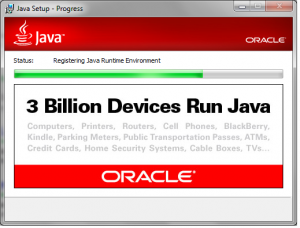Today (18.03.2014) is the official release date for Java 8 and the download page from Oracle now lists Java 8 as the latest release. I have been trying out various new features of Java 8 for more than 6 months now. I had downloaded the early access build and have been using it with intellij 12.1.6.
Support for Java 8 in intellij is reasonable so far, even though there have been some minor issues, one of them which I had reported and got fixed. This involved “Error suggestion” for checked exceptions inside a lambda expression containing a wrong suggestion to add the exception to the method definition which results in a non compilable code. Just like an anonymous inner class must catch all its checked exceptions, a lambda must also catch them all within the lambda block. Also the code completion using custom templates inside the lambda block does not seem to work as well.
There are many examples to be found in the internet that explains very well what a lambda expression is and how they could make the life easier for Java developers in certain cases. Oracle’s tutorial is worth checking out as it also explains the necessity of lambda by starting with a pre Java 8 code and transforming it step by step using lambda expression.
Why lambda? A mature language facing a mid-life crisis
At 18, Java platform is not a novelty anymore. Since its first release in 1995, the platform and the language has grown to achieve unprecedented success, immense popularity and widespread adoption in almost all walks of software development. According to Oracle’s own claim, 3 billion devices run on Java and that include Computers, Printers, Routers, Mobile devices, Tablets and a wide range of other networked appliances (to me it sounds like one of those claims which will never be verified!)
Though it might seem like things have never been better for Java, there are skeptics who believe that both the platform and the language have seen their best times already – those who regard Java as a cluttered, poorly designed and overreached language that is slow or incapable to adapt to the latest challenges in the industry. This doubt comes at a time when Java is facing increasing competition from dynamic languages like Ruby and functional languages like Scala and Clojure.
Competition from Ruby and Scala
While Ruby was first developed at around the same time when the first ever Jdk was released, it never grew to be as popular as Java as a programming language. Though highly expressive with its concise and some say beautiful syntax, Ruby’s dynamic typing system kept it largely away from the big scale enterprise projects where the static typing of Java was highly valued for maintenance reasons. But the embrace of Ruby on Rails by many companies in the middle of the last decade gave the language a fresh new life. Ruby on Rails or Rails as it is popularly known was adopted by many web based start-ups who valued its productivity and shorter time-to-market. In the following years, it has made its way into one of the top programming languages used for web development and scripting. Twitter was developed almost entirely using Ruby and Rails and ran on it until very recently when it switched to Scala.
Lately Scala has also emerged as a serious alternative to Java. It has some of the treasured qualities of Java such as a static type system and object oriented programming style, but at the same time it boasts many other powerful features that comes with a functional style programming. Its syntax is more concise and code less cluttered when compared to Java as the designers of Scala took care to avoid the boiler-plate mess that Java is known for. Twitter and LinkedIn are some of the most well known adopters of Scala. Also Akka and Play! – two increasingly popular frameworks are written for Scala though they support Java as well. Scala has the advantage that it runs on JVM and mixes seamlessly with Java (one can import JDK libraries in Scala code).
Here comes the closure
Many popular languages support closures, but Java was not one of them until Java 8. In order to get around with this limitation, Java developers had to depend upon a helper interface and an anonymous instance of this interface which would implement the behavior for the interface. This resulted in quite a bit of boilerplate code that comes up with anonymous inner class in the client code. But with Java 8, this should be eased a bit.
What could be written using anonymous inner class in Java 7 could be expressed as an anonymous function in Java 8
Java 7:
public class HelloInnerWorld {
public static void main(String[] args) {
new Thread(new Runnable() {
@Override
public void run() {
System.out.println("Hello World");
}
}).start();
}
}
Java 8:
public class HelloLambdaWorld {
public static void main(String[] args) {
new Thread(() -> System.out.println("Hello World")).start();
}
}
How the above code will change in a way that again results in boilerplate code when the code in the closure throws a checked exception, I will explain in another post.
